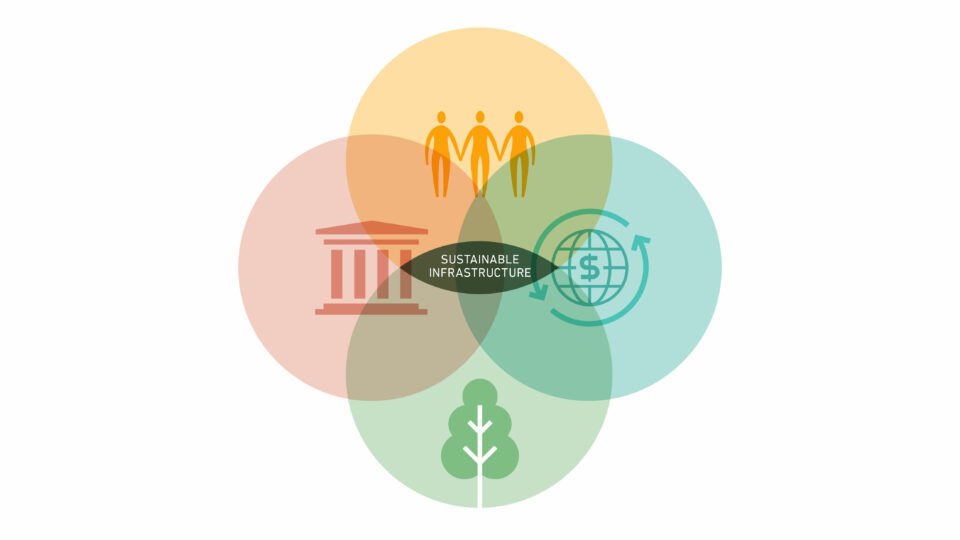The report analyses critically the current development infraestructures model and proposes a shift in policies to guarantee basic public services
Coordinated by Eurodad and Society for International Development (SID), with the collaboration of Observatori del Deute en la Globalització, ODG, Spain; AFRODAD, Africa región; Ambiente y Sociedad, Colombia; Fundación Ambiente y Recursos Naturales, FARN, Argentina; Universidade Federal Rural de Pernambuco and Articulação Semiárido Brasileiro, URFPE and ASA, Brazil; and VB Platforma, Lithuanian NGDO Platform, Lithuania.
Sustainable infrastructure investments are placed at the centre of development strategies, and rightly so, as they are key to delivering on the services and facilities that allow for the well-functioning of economies and societies. Yet, as this report shows, the prevailing narrative on infrastructure finance contains pitfalls and limitations that might undermine its stated objective. To address them, the report provides a framing to understand sustainable infrastructure from a systemic perspective. This focuses on global economic justice and developing countries’ right to development, domestic resource mobilisation, and climate resiliency.
It also provides evidence of five emblematic infrastructure projects that are designed and financed through a Public-Private Partnership (PPPs) following the ‘private-finance first’ approach to infrastructure finance. The case studies highlight that the emphasis on attracting private investments towards large infrastructure projects or mega-corridors raises major concerns. Not only does this approach not address the structural weaknesses of socioeconomic transformation in developing countries, but it also exacerbates the existent development obstacles faced by these countries, including indebtedness, commodity dependence, vulnerability to volatile capital flows, ecological damage and weak public infrastructure systems.
5 cases of Public-Private Partnership that failed providing public services
• Argentina’s Highways and Safe Routes Network
• Cundinamarca Eastern Perimeter Corridor in Colombia
• Inga III dam power plan in the Democratic Republic of the Congo
• Myanmar’s Myingyan gas power plant
• Nacala Road Development Corridor in Zambia, Malawi and Mozambique
In contrast, projects which have implemented active participation and even co-creation with local communities, integrated a gender-sensitive lens, and responded to local and national needs throughout their planning, design and financing, are more cost-effective and ecologically sustainable. They also contribute towards the long-term development plans of countries whilst simultaneously serving the interests of local communities.
2 cases of succes with Public-Communitary Partnership:
• Lithuania’s Prosumer Solar Community
• Brazil’s One Million Cisterns Programme
It is important to ensure that infrastructure projects serve the public good and work to enable the enjoyment of human rights for all. Civil society has a key role to play in reclaiming sustainable infrastructure as a public good by calling on decision-makers on regional, national and international level to shift course:
1) Scale up publicly financed infrastructure, particularly in social sectors. Public financing is often less costly, more financially sustainable, and more directly accountable to citizens than private financing. This requires lamping down on losses of public resources through tax abuse; dealing with unsustainable debts through a new fair, democratic and transparent sovereign debt workout mechanism; increasing levels and quality of international concessional resources, including through meeting official development assistance (ODA) commitments, among others.
2) Rethink the promotion of private finance for infrastructure. An infrastructure finance agenda focused on developing ‘infrastructure as an asset class’ and promoting PPPs risks undermining progress on meeting the SDGs. National governments should preserve their capacity to regulate in the public interest.
3) Sustainable infrastructure and its financing mechanisms must be rooted in human rights and socioeconomic transformation, high standards of democratic accountability, and contribute to an intergenerational approach to climate adaptation. In this sense:
- Infrastructure governance should be democratising, e.g. Local/affected communities should be engaged in co-designing projects.
- Integrate resilience into planning and delivery systems, infrastructure must be designed and adapted to withstand, respond to and recover rapidly from disruptions related to environmental hazards caused by climate change.
- Regional infrastructure connectivity should be planned and implemented with the goal of meeting peoples’ needs as its highest priority. This includes creating decent jobs, stimulating local economic development, protecting the environment, reducing inequality, promoting gender equality and social inclusion, and building peace
Supported by:


